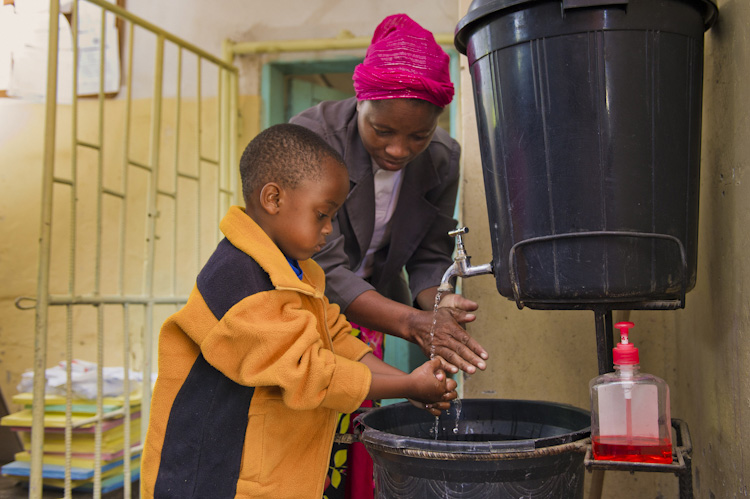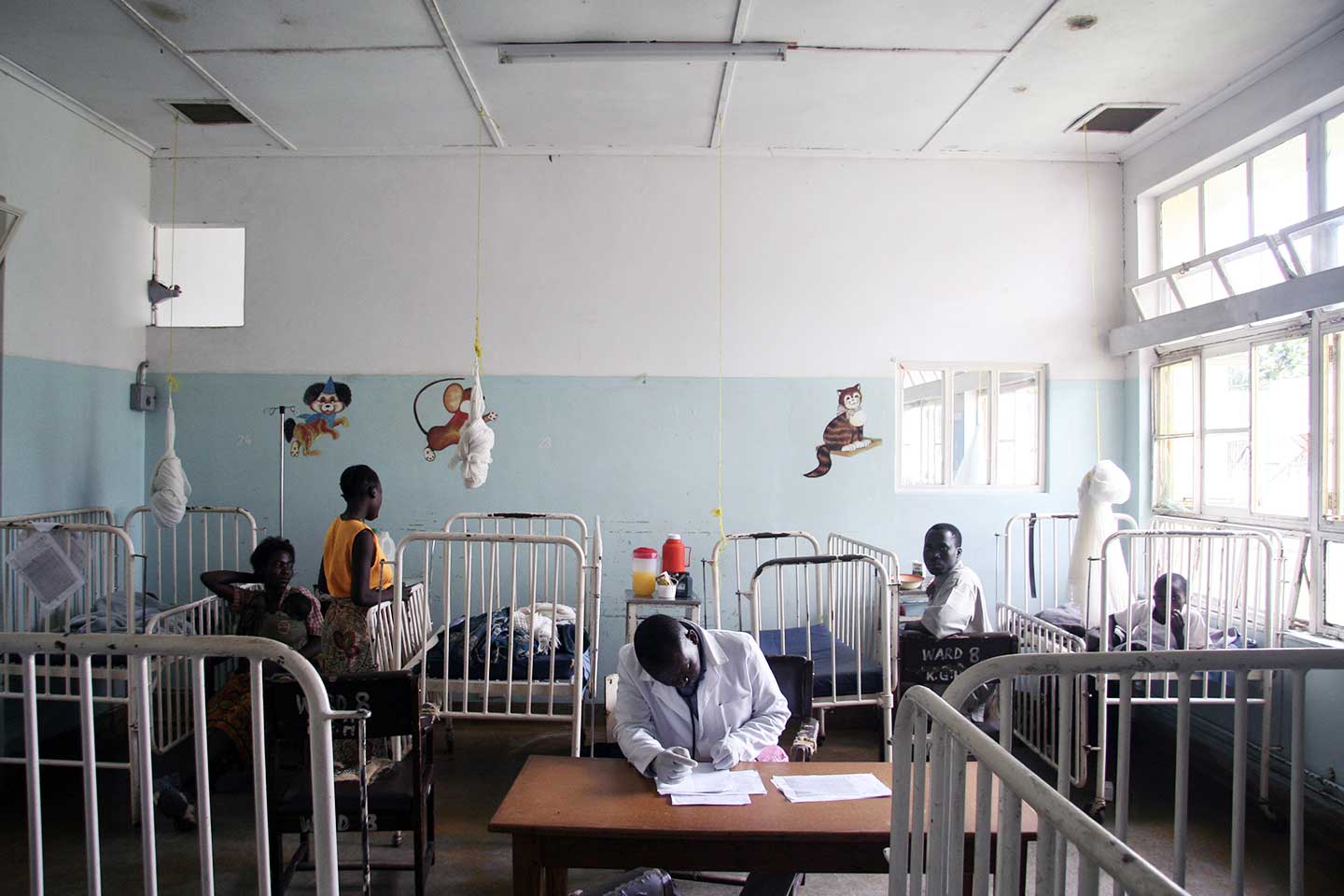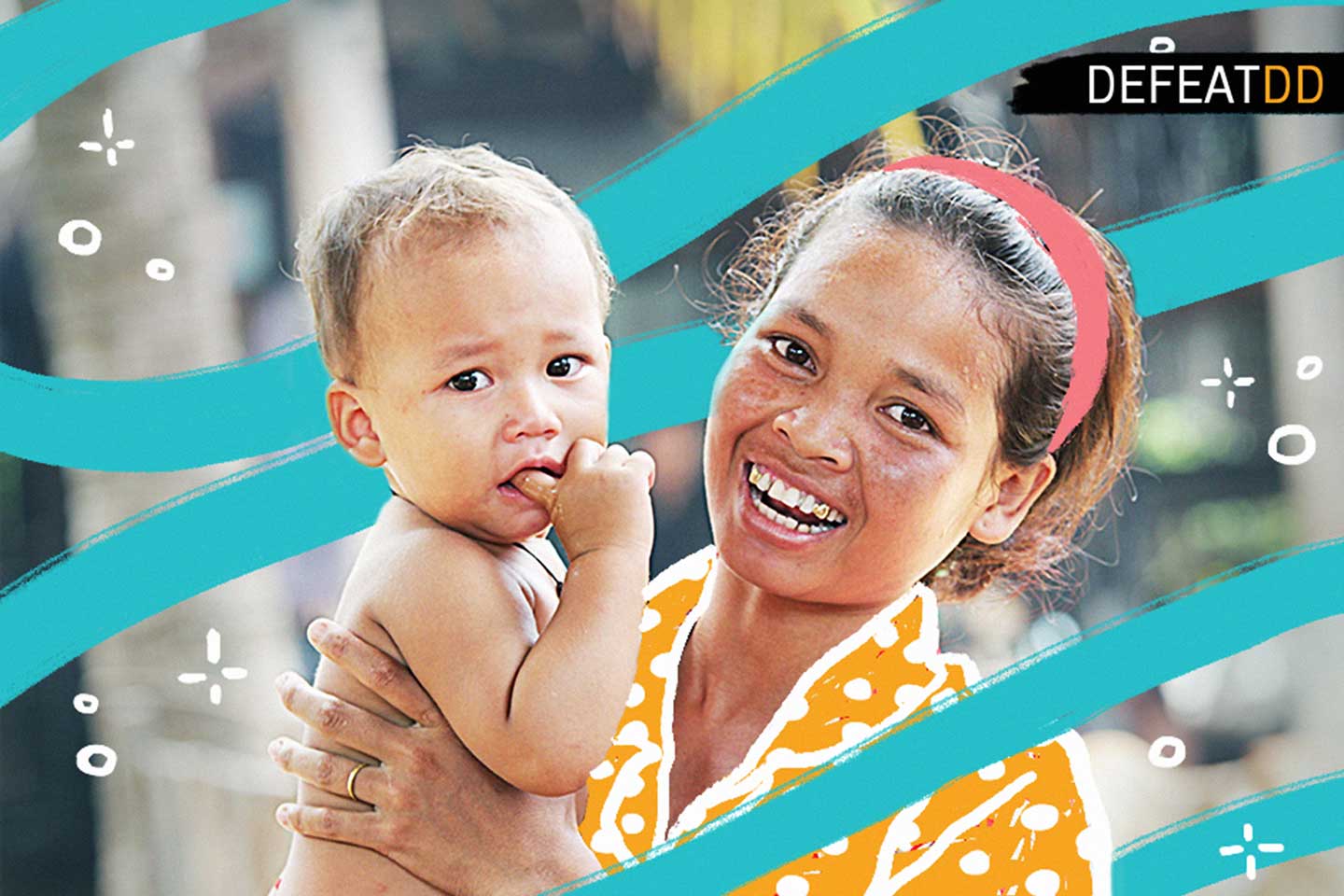COVID-19 as an awakening for hand hygiene access
Globally 3 billion people lack hand hygiene facilities at home and two out of five health care facilities lack hand hygiene at points of care. As the pandemic unfolded around the world, hand sanitizer and handwashing stations became as in-demand as toilet paper.
- 15 October 2020
- 4 min read
- by Defeat Diarrheal Disease Initiative (DefeatDD)

Original article
This post also appears on the Global Handwashing Partnership and DefeatDD websites.
When the COVID-19 pandemic first began and little was known about the novel coronavirus, one of the World Health Organization (WHO)’s first recommendations was a simple, tried-and-true public health measure: handwashing. This advice persists today as one of the most important ways, alongside masks, to prevent COVID-19. Just twenty seconds of scrubbing with water and soap, or with an alcohol-based hand sanitizer, can wash away the novel coronavirus – in addition to other common infectious diseases such as typhoid, cholera, and diarrheal pathogens like rotavirus, E. coli, and Shigella.
As the pandemic unfolded around the world, hand sanitizer and handwashing stations became as in-demand as toilet paper. But in too many places around the world, a preexisting lack of access to safe water, sanitation, and hygiene (WASH) resources makes handwashing impossible. In fact, 40% of the world’s population does not have access to a basic handwashing facility.
For health care workers who cannot practice safe handwashing due to a lack of safe water or soap in health care facilities, this issue can have dire consequences for spreading infection. In a COVID-19 guidance document sent to Member States in April 2020, WHO wrote:
“Although awareness of the importance of hand hygiene in preventing infection with the COVID-19 virus is high, access to hand hygiene facilities that include alcohol-based hand rubs as well as soap and water is often suboptimal in the community and in health care facility settings, especially in low-and middle-income countries. WHO and UNICEF estimate that globally 3 billion people lack hand hygiene facilities at home and two out of five health care facilities lack hand hygiene at points of care.”
Globally 3 billion people lack hand hygiene facilities at home and two out of five health care facilities lack hand hygiene at points of care.
WHO recognized WASH in health care facilities as an urgent global health crisis in 2019, before COVID-19 began. The World Health Assembly Resolution urges countries to address the issue and seeks commitments from governments, partners, organizations, and individuals in line with the Resolution.
Another critical location for hand hygiene access is in schools. For families without handwashing facilities at home, schools can be a lifeline of hygiene access for children. With many schools currently closed due to the pandemic, this lifeline is shut off. But in too many other schools, WASH was already lacking before the start of COVID-19. A recent WASH in Schools report from UNICEF found that, in the 60 countries at the highest risk of health and humanitarian crisis due to COVID-19, 3 in 4 children lacked a basic handwashing service at their school at the start of the outbreak. As schools begin to reopen, UNICEF and WHO urge governments to implement WASH in schools. These steps will not only help stop the spread of COVID-19, but also protect children from other WASH-related diseases such as diarrhea and typhoid that can interrupt education and have lasting health consequences.
Have you read?
Of course, installing handwashing facilities is just the first step to improving access and uptake. As with all public health interventions, there also is a human behavioral component. The latest research on behavior change highlights the utility of simple environmental “nudges” such as signs, communication that is empowering rather than fear-inducing, and the importance of infrastructure. More behavior change research is needed, but one thing is clear – behavior change can only go so far without policy change. It’s impossible for people to make good choices when they have no good choices. In the same COVID-19 guidance document, WHO acknowledges findings from research:
“When hand hygiene is provided free of charge and is made obligatory by public health authorities, acceptability and adherence to hand hygiene best practices are improved.”
In order to make access to hand hygiene a universal reality, it is crucial for country governments to support hand hygiene through policies and funding: something that WHO and UNICEF formally called for in their Hand Hygiene for All call to action. The pandemic makes this call especially urgent, but long before COVID-19, the everyday crises of cholera, pneumonia, typhoid, and diarrheal diseases revealed the consequences of inadequate WASH in homes, schools, and health care facilities. We’ve learned a lot from the efforts to combat these diseases and their cascading impacts, so we know what needs to be done.
Perhaps COVID-19 can serve as the wake-up call to prioritize hand hygiene – along with safe water and sanitation – now and long into the future.









